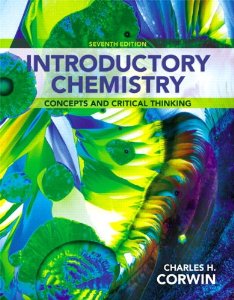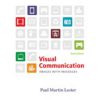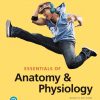Test Bank for Introductory Chemistry Concepts and Critical Thinking, 7th Edition : Corwin
$35.00 Original price was: $35.00.$26.50Current price is: $26.50.
Test Bank for Introductory Chemistry Concepts and Critical Thinking, 7th Edition : Corwin
This is completed downloadable of Test Bank for Introductory Chemistry Concepts and Critical Thinking, 7th Edition : Corwin

Product Details:
- ISBN-10 : 9780321804907
- ISBN-13 : 978-0321804907
- Author: Charles H. Corwin
With an expanded focus on critical thinking and problem solving, the new edition of Introductory Chemistry: Concepts and Critical Thinking prepares readers for success in introductory chemistry. Unlike other introductory chemistry texts, all materials –the textbook, student solutions manual, laboratory manual, instructor’s manual and test item file – are written by the author and tightly integrated to work together most effectively. Math and problem solving are covered early in the text; Corwin builds reader confidence and ability through innovative pedagogy and technology formulated to meet the needs of today’s learners.
Table of Content:
1 Introduction to Chemistry
1.1 Evolution of Chemistry 1.2 Modern Chemistry
CHEMISTRY CONNECTION “Worth Your Salt?�
1.3 Learning Chemistry
CHEMISTRY CONNECTION A Student Success Story
Summary • Key Terms • Exercises
Chapter Self-Test
Prerequisite Science Skills
PSS.1 Measurements
PSS.2 Significant Digits
PSS.3 Rounding Off Nonsignificant Digits
PSS.4 Adding and Subtracting Measurements
PSS.5 Multiplying and Dividing Measurements
PSS.6 Exponential Numbers
PSS.7 Scientific Notation
2 The Metric System
2.1 Basic Units and Symbols CRITICAL THINKING The International System of Measurement (SI)
2.2 Metric Conversion Factors
2.3 Metric—Metric Conversions
2.4 Metric—English Conversions
CHEMISTRY CONNECTION The Olympics
CRITICAL THINKING World Trade Center
2.5 The Percent Concept
2.6 Volume by Calculation
2.7 Volume by Displacement
2.8 The Density Concept
2.9 Temperature
2.10 The Heat Concept
Summary • Problem-Solving Organizer
Key Terms • Exercises
Chapter Self-Test
3 Matter and Energy
3.1 Physical States of Matter 3.2 Elements, Compounds, and Mixtures
3.3 Names and Symbols of the Elements
CRITICAL THINKING Aluminum or Aluminium?
3.4 Metals, Nonmetals, and Semimetals
CHEMISTRY CONNECTION Elements 104 and Beyond
3.5 Compounds and Chemical Formulas
3.6 Physical and Chemical Properties
3.7 Physical and Chemical Changes
3.8 Conservation of Mass
3.9 Potential and Kinetic Energy
3.10 Conservation of Energy
CHEMISTRY CONNECTION Recycling Aluminum
Summary • Key Terms • Exercises
Chapter Self-Test
4 Models of the Atom
4.1 Dalton Model of the Atom CHEMISTRY CONNECTION John Dalton
4.2 Thomson Model of the Atom
4.3 Rutherford Model of the Atom
4.4 Atomic Notation
4.5 Atomic Mass
CHEMISTRY CONNECTION Heavy Water
4.6 The Wave Nature of Light
4.7 The Quantum Concept
4.8 Bohr Model of the Atom
CRITICAL THINKING Neon Lights
4.9 Energy Levels and Sublevels
4.10 Electron Configuration
4.11 Quantum Mechanical Model of the Atom
Summmary • Key Terms • Exercises
Chapter Self-Test
5 The Periodic Table
5.1 Classification of Elements CHEMISTRY CONNECTION Dmitri Mendeleev
5.2 The Periodic Law Concept
5.3 Groups and Periods of Elements
CRITICAL THINKING IUPAC Group Numbers
5.4 Periodic Trends
5.5 Properties of Elements
5.6 Blocks of Elements
5.7 Valence Electrons
5.8 Electron Dot Formulas
5.9 Ionization Energy
5.10 Ionic Charges
CHEMISTRY CONNECTION Evolution of Chemical Elements
Summary • Key Terms • Exercises
Chapter Self-Test
6 Language of Chemistry
6.1 Classification of Compounds CHEMISTRY CONNECTION Antoine and Marie Lavoisier
6.2 Monoatomic Ions
6.3 Polyatomic Ions
6.4 Writing Chemical Formulas
CRITICAL THINKING Nutritional Potassium
6.5 Binary Ionic Compounds
6.6 Ternary Ionic Compounds
6.7 Binary Molecular Compounds
6.8 Binary Acids
6.9 Ternary Oxyacids
CHEMISTRY CONNECTION IUPAC Nomenclature
Summary • Nomenclature Organizer
Key Terms • Exercises
Chapter Self-Test
7 Chemical Reactions
CHEMISTRY CONNECTION Fireworks
7.1 Evidence for Chemical Reactions
7.2 Writing Chemical Equations
7.3 Balancing Chemical Equations
7.4 Classifying Chemical Reactions
7.5 Combination Reactions
7.6 Decomposition Reactions
7.7 The Activity Series Concept
7.8 Single-Replacement Reactions
7.9 Solubility Rules
7.10 Double-Replacement Reactions
7.11 Neutralization Reactions
CRITICAL THINKING Household Chemicals
Summary • Key Terms • Exercises
Chapter Self-Test
8 The Mole Concept
8.1 Avogadro’s Number CHEMISTRY CONNECTION Analogies for Avogadro’s Number
8.2 Mole Calculations I
8.3 Molar Mass
8.4 Mole Calculations II
8.5 Molar Volume
8.6 Mole Calculations III
8.7 Percent Composition
8.8 Empirical Formula
8.9 Molecular Formula
CRITICAL THINKING Avogadro’s Number
Summary • Problem—Solving Organizer
Key Terms • Exercises
Chapter Self-Test
9 Chemical Equation Calculations
9.1 Interpreting a Chemical Equation 9.2 Mole—Mole Relationships
CRITICAL THINKING Iron versus Steel
9.3 Types of Stoichiometry Problems
9.4 Mass—Mass Problems
9.5 Mass—Volume Problems
9.6 Volume—Volume Problems
CHEMISTRY CONNECTION Manufacturing Ammonia
9.7 Limiting Reactant Concept
9.8 Limiting Reactant Problems
9.9 Percent Yield
Summary • Problem-Solving Organizer
Key Terms • Exercises
Chapter Self-Test
10 Gases
10.1 Properties of Gases 10.2 Atmospheric Pressure
CHEMISTRY CONNECTION The Greenhouse Effect
10.3 Variables Affecting Gas Pressure
10.4 Boyle’s Law: Pressure—Volume Relationships
CHEMISTRY CONNECTION Robert Boyle
10.5 Charles’s Law: Volume—Temperature Relationships
10.6 Gay-Lussac’s Law: Pressure—Temperature Relationships
10.7 Combined Gas Law
10.8 The Vapor Pressure Concept
10.9 Dalton’s Law of Partial Pressures
10.10 Ideal Gas Behavior
10.11 Ideal Gas Law
CRITICAL THINKING Conceptualizing Gases
Summary • Problem—Solving Organizer
Key Terms • Exercises
Chapter Self-Test
11 Liquids and Solids
11.1 Properties of Liquids 11.2 The Intermolecular Bond Concept
11.3 Vapor Pressure, Boiling Point, Viscosity, and Surface Tension
11.4 Properties of Solids
11.5 Crystalline Solids
11.6 Changes of Physical State
11.7 Structure of Water
CHEMISTRY CONNECTION Water Purification
11.8 Physical Properties of Water
11.9 Chemical Properties of Water
11.10 Hydrates
CRITICAL THINKING Bottled Water
Summary • Key Terms • Exercises
Chapter Self-Test
12 Chemical Bonding
12.1 The Chemical Bond Concept 12.2 Ionic Bonds
12.3 Covalent Bonds
12.4 Electron Dot Formulas of Molecules
12.5 Electron Dot Formulas of Polyatomic Ions
12.6 Polar Covalent Bonds
CHEMISTRY CONNECTION Linus Pauling
12.7 Nonpolar Covalent Bonds
12.8 Coordinate Covalent Bonds
12.9 Hydrogen Bonds
12.10 Shapes of Molecules
CRITICAL THINKING Diamond versus Graphite
Summary • Key Terms • Exercises
Chapter Self-Test
13 Solutions
13.1 Gases in Solution 13.2 Liquids in Solution
13.3 Solids in Solution
CHEMISTRY CONNECTION Colloids
13.4 The Dissolving Process
13.5 Rate of Dissolving
13.6 Solubility and Temperature
13.7 Unsaturated, Saturated, and Supersaturated Solutions
13.8 Mass/Mass Percent Concentration
13.9 Molar Concentration
CRITICAL THINKING Water Fluoridation
13.10 Dilution of a Solution
13.11 Solution Stoichiometry
Summary • Problem—Solving Organizer
Key Terms • Exercises
Chapter Self-Test
14 Acids and Bases
14.1 Properties of Acids and Bases 14.2 Arrhenius Acids and Bases
CHEMISTRY CONNECTION Svante Arrhenius
14.3 Brønsted—Lowry Acids and Bases
14.4 Acid—Base Indicators
14.5 Acid—Base Titrations
14.6 Acid—Base Standardization
14.7 Ionization of Water
14.8 The pH Concept
14.9 Advanced pH Calculations
CRITICAL THINKING Acid Rain
14.10 Strong and Weak Electrolytes
14.11 Net Ionic Equations
Summary • Problem—Solving Organizer
Key Terms • Exercises
Chapter Self-Test
15 Advanced Problem Solving
15.1 Advanced Problem-Solving Strategies
15.2 Concept Maps — Mole Relationships
15.3 Concept Maps — Stoichiometry
15.4 Multiple-Reaction Stoichiometry
CRITICAL THINKING Nanotechnology
15.5 Advanced Problem-Solving Examples
Summary • Key Terms • Exercises
Online Exercises
Chapter Self-Test
16 Chemical Equilibrium
16.1 Collision Theory 16.2 Energy Profiles of Chemical Reactions
16.3 The Chemical Equilibrium Concept
CHEMISTRY CONNECTION The Ozone Hole
16.4 General Equilibrium Constant, Keq
16.5 Equilibria Shifts for Gases
16.6 Ionization Equilibrium Constant, Ki
16.7 Equilibria Shifts for Weak Acids and Bases
16.8 Solubility Product Equilibrium Constant, Ksp
16.9 Equilibria Shifts for Slightly Soluble Compounds
Summary • Key Terms • Exercises
Chapter Self-Test
17 Oxidation and Reduction
17.1 Oxidation Numbers 17.2 Oxidation—Reduction Reactions
17.3 Balancing Redox Equations: Oxidation Number Method
17.4 Balancing Redox Equations: Half-Reaction Method
17.5 Predicting Spontaneous Redox Reactions
17.6 Voltaic Cells
17.7 Electrolytic Cells
CHEMISTRY CONNECTION Hybrid Vehicles
Summary • Key Terms • Exercises
Chapter Self-Test
18 Nuclear Chemistry
18.1 Natural Radioactivity 18.2 Nuclear Equations
18.3 Radioactive Decay Series
18.4 Radioactive Half-Life
18.5 Applications of Radionuclides
CRITICAL THINKING Nuclear Medicine
18.6 Induced Radioactivity
18.7 Nuclear Fission
CHEMISTRY CONNECTION Nuclear Power Plant
18.8 Nuclear Fusion
Summary • Key Terms • Exercises
Chapter Self-Test
19 Organic Chemistry
19.1 Hydrocarbons 19.2 Alkanes
19.3 Alkenes and Alkynes
19.4 Arenes
19.5 Hydrocarbon Derivatives
19.6 Organic Halides
19.7 Alcohols, Phenols, and Ethers
19.8 Amines
19.9 Aldehydes and Ketones
19.10 Carboxylic Acids, Esters, and Amides
CHEMISTRY CONNECTION Forensic Chemistry
Summary • Key Terms • Exercises
Chapter Self-Test
20 Biochemistry
20.1 Biological Compounds 20.2 Proteins
20.3 Enzymes
20.4 Carbohydrates
20.5 Lipids
CRITICAL THINKING Vitamins
20.6 Nucleic Acids
CRITICAL THINKING Left- and Right-Handed Molecules
Summary • Key Terms • Exercises
Chapter Self-Test
Appendices
A Weights and Measures
B Physical Constants
C Activity Series for Metals
D Solubility Rules for Ionic Compounds
E Vapor Pressure of Water
F Properties of Water
G Answers to Concept Exercises
H Answers to Key Term Exercises
I Answers to Odd-Numbered Exercises
J Answers to Chapter Self-Tests
Glossary
Photo Credits
Index
People Also Search:
introductory chemistry concepts and critical thinking
introductory chemistry concepts and critical thinking 7th edition
introductory chemistry concepts and critical thinking 7th edition corwin
introductory chemistry concepts and critical thinking 7th edition corwin testbank download pdf
introductory chemistry concepts and critical thinking 7th edition corwin download scribd











